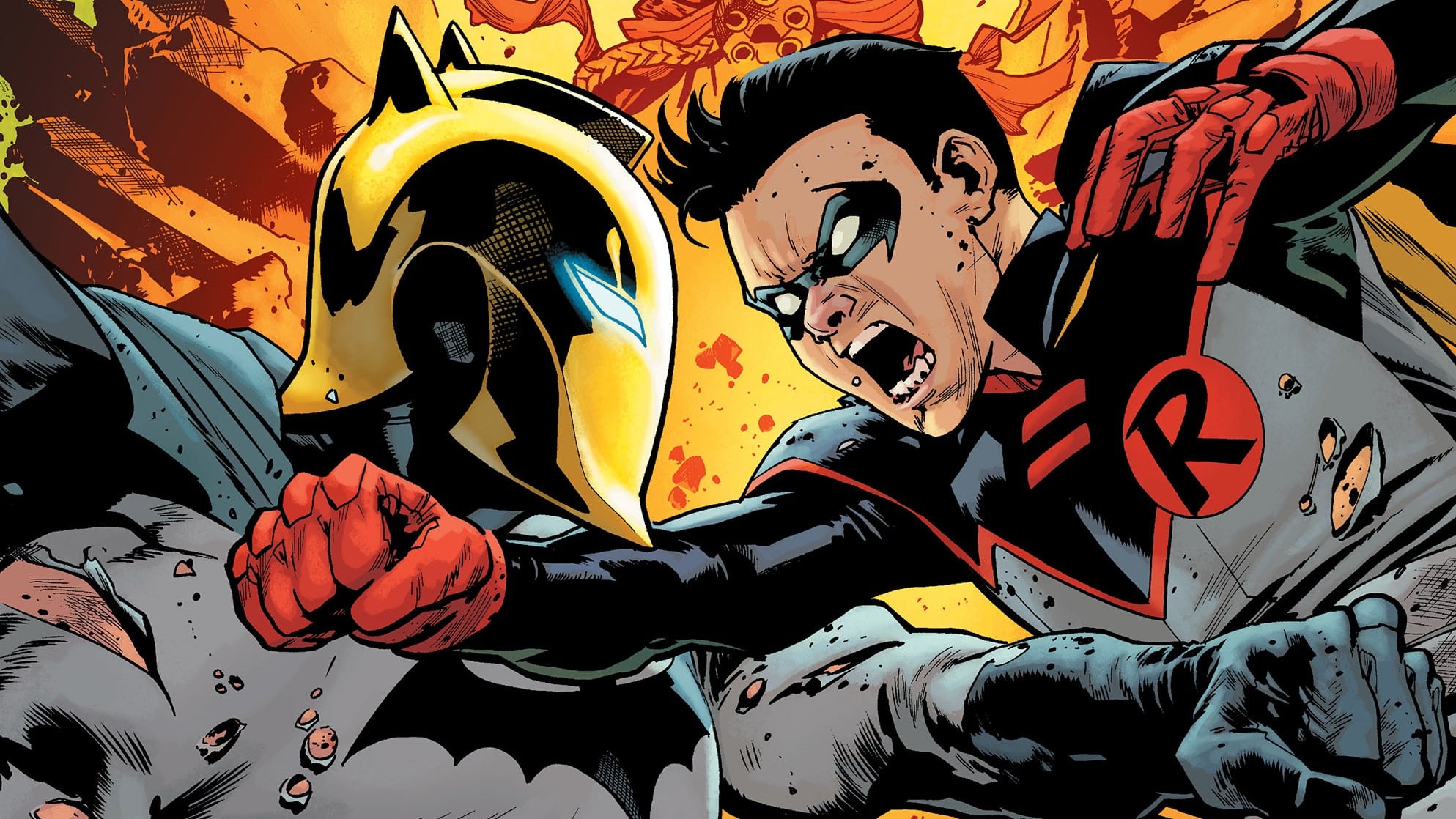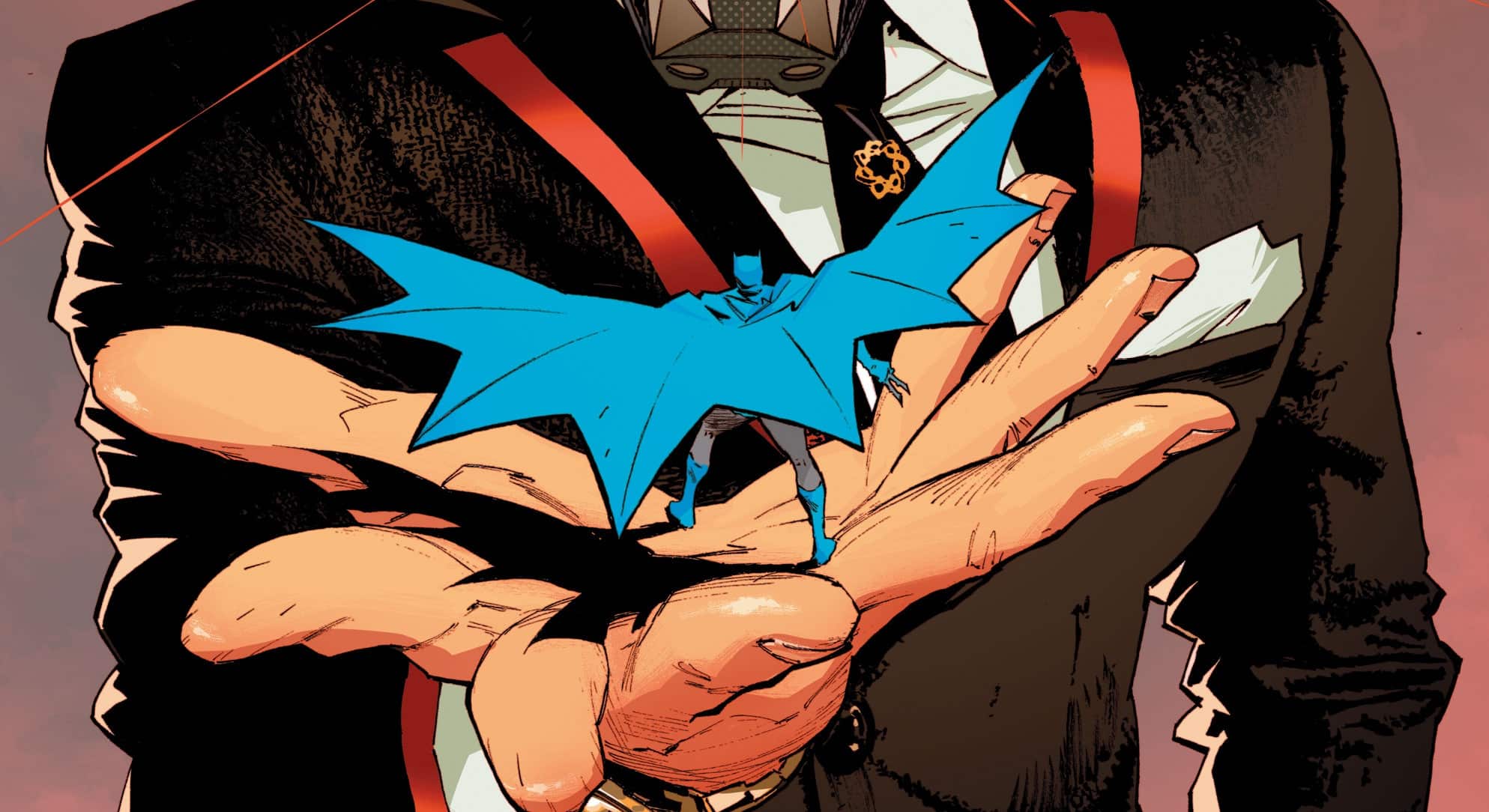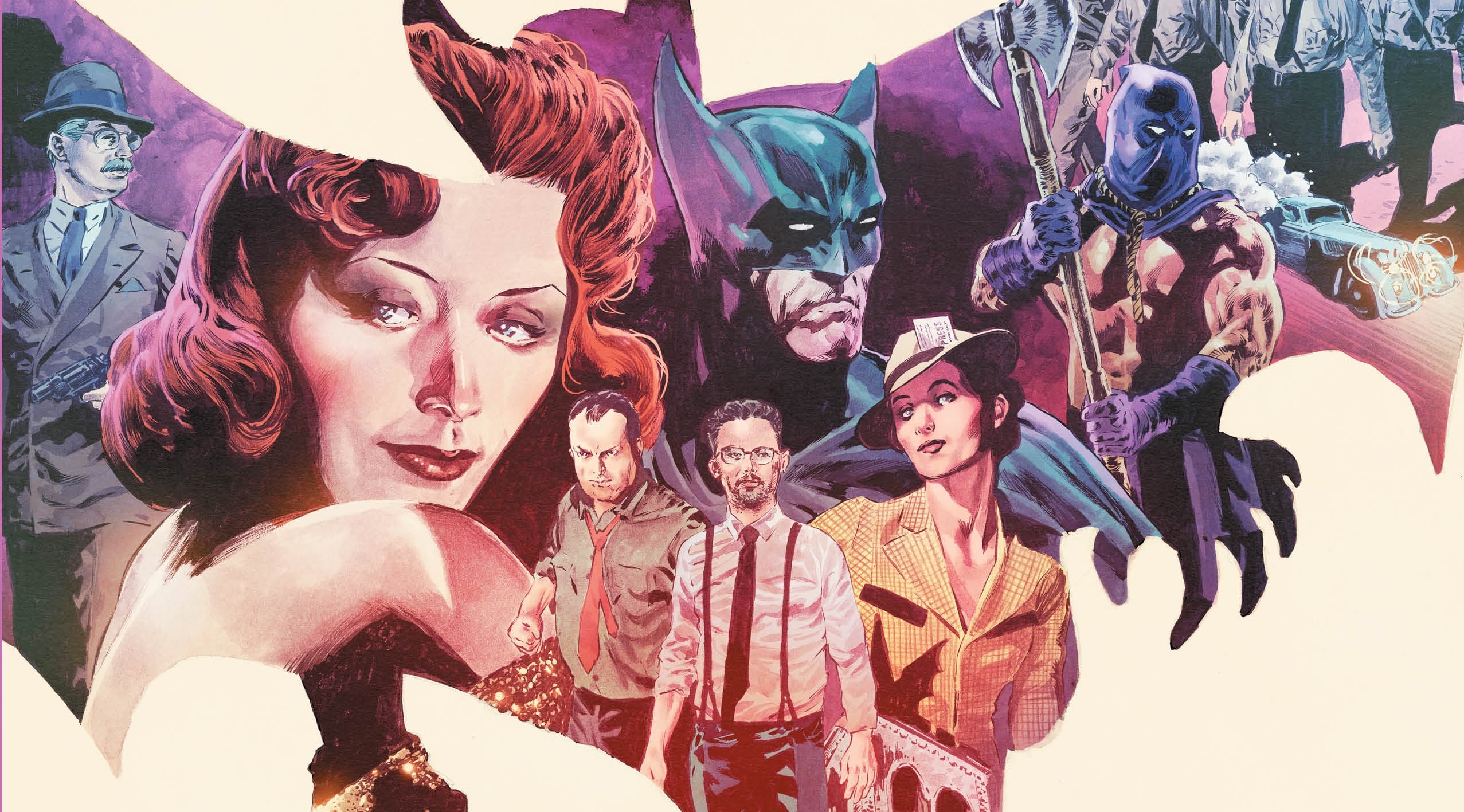It all comes down to this: Father fights son while the Devil Nezha and Mother Soul look on. Batman vs. Robin #4 is written by Mark Waid, drawn by Mahmud Asrar and Scott Godlewski, colored by Jordie Bellaire and lettered by Steve Wands.
While our three rookies face the effects of their actions or inactions, Commissioner Montoya pushes the line to prove Two-Face was behind the FoxTech break-in in GCPD: The Blue Wall #3, written by John Ridley, drawn by Stefano Raffaele, colored by Brad Anderson and lettered by Troy Peteri.
The penultimate issue of the series, Batman: Urban Legends #22 starts a Nightwing and Oracle two-parter, continues the ongoing Arkham Academy and time travel stories and has a one-off featuring Anarky.
Will Nevin: Is this the week we’re finally caught up from the terrible Matt Had Trouble Getting His Books Crisis of 2022? Because it feels like we’re all caught up … except for maybe White Knight. And I’m OK forever being behind on that one.
Matt Lazorwitz: Yup, although there’s only so many books we can cover each week and it looks like DC isn’t slowing down the number of Bat titles they’re releasing, so we have to pick and choose some. And in one place, we’re back just in time for the finale, so we will have some more room soon.
Father Vs. Son

Will: So I had to get alllll the way read up on this one, and let me say: 1) Goddamned it, can we please have Alfred back? And 2) that was such a shitty way to tease this series when editorial knew it wouldn’t lead to the actual return.
Matt: But it sure worked to get some people interested. I probably should have known it was a fake, but I wanted it so bad I was taken in.
But this series has done a good job of playing with all the characters it has. Batman is really well written in his struggle to deal with the possible loss of Damian to the darkness and his desire for Alfred to be alive again, even though he knows it’s not true. And this is Damian at his worst, but in the “he couldn’t be more evil” sense. He’s less of a condescending shit and more of a genuine threat than he has been presented in other instances when he could have broken bad before.
Will: There is *a lot* to keep track of in these issues, and most of it’s over my head. Really, you lose me when you start to talk about demons and ancient gods in a Batman title. But I guess Batman wearing Dr. Fate’s helm and being able to play with all the magic toys is cool. And there’s the central emotional idea that’s strong throughout the series — Batman questioning whether he’s been a good father or what more he could have done for the family. But as strong as that is, it can get lost in *waves arms at* whatever the rest of this is.
Matt: I am nowhere near as bothered by the genre stuff as you are in this one. Maybe that’s 30 plus years of reading Batman stories across many genres and just being more used to him as a superhero, which this very much is. While my favorite Batman stories tend to be the ones of him fighting crime on the streets of Gotham, I still love a Batman who can punch Martians or face down alien hordes with Frankenstein on Mars. And I know all the characters who popped up in the earlier issues, so it’s just within my nature to roll with it.
My quibble on a lot of this has more to do with appropriation. I have no problem with Gene Luen Yang, someone of Chinese ancestry, using Pigsy and King Fire Bull, characters from Journey to the West, in his Monkey Prince series. But if you’re not familiar, Journey to the West is a Chinese novel from the 16th century that is possibly the most important and beloved novel in Chinese history. I love Mark Waid, but it weirds me out a little to see a white guy from Alabama using those characters without a lot of their cultural context. I’m not citing any ill intent, or any ill use, but I’d feel a little more comfortable if Yang had a story credit on this thing.
Will: Waid, I think, gets even less of a pass on this sort of thing than other white guys from Alabama (*waves at himself*) because you’d think he’d learn from what people had to say about Strange Fruit. But that’s a big ol’ nope. I feel like there’s not any racism here, but it’s a profound — and unseemly — streak of stubbornness.
Matt: Yang is heavily involved in Lazarus Planet spinning out of this, so there is that. And he’s using characters from literature, so it’s not like he’s using real people, so I don’t see racism in here. For want of a better analogy, it’s like an Indian novelist writing a novel where the villains are Uncle Sam and Johnny Appleseed; these aren’t religious figures, but they are culturally significant, and someone not of that culture using them is going to raise an eyebrow or two.
But we’re still not talking about this issue. I think this series, and this particular issue, should be a turning point for Damian. He has had darkness forced upon him, he’s come out of it, he’s chosen to save a life, even a reprehensible one, because it’s the right thing for him to do. We should no longer have Damian-struggling-with-his-darkness stories. That character beat should be exhausted. But that has been the character arc that has defined Damian from jump, and I fear that, when writers in the future need to do something with Damian, they will revert him to his old, maybe homicidal, self.
Two-Faced but Not Two-Face

Matt: This continues to be the best thing John Ridley has done since he started writing more regularly for DC. While Montoya has been featured a bit in each issue, this issue zeroes in on her and what she is going through, and more than that, while it doesn’t paint her in an entirely unsympathetic light, it does show how easy it is for even those with the best of intentions to abuse power when they have it, and not even see it as an abuse of power.
Will: For those of us who don’t have that encyclopedic memory, can you refresh us on what/when Harvey so traumatized Montoya?
Matt: So, Harvey became obsessed with Renee when she stood up to Batman for him post-“Cataclysm”/pre-“No Man’s Land,” and it only deepened during NML, when she served as the liaison between Dent’s fiefdom and the Blue Boys during Harvey and Gordon’s uneasy alliance to bring order to Gotham. And after the return of Gotham to the rest of the country, well, when Renee spurned Harvey’s advances and he found out she was in the closet, he outed her with a photo of her kissing a woman on the bulletin board in the Eisner and Harvey award-winning second arc of Gotham Central, “Half a Life.”
Will: I was worried we had already read that for the show and I’d forgotten it, but nope! (That was “Soft Targets” we did and ranked quite highly.) But as to this book, you’re absolutely right — this is Ridley’s best DC work this side of One Bad Day: Penguin, and for many of the same reasons — it’s grounded, relatable and shows a more street-level view of Gotham and the people fighting for it.
Matt: Renee here is so sure that Two-Face is behind the FoxTech robbery from last issue, something the reader knows he had nothing to do with, that she is willing to go black budget and violate Harvey’s civil rights by performing illegal surveillance to prove his guilt. And she is so wrapped up in it, she completely ignores Officer Ortega, who is facing real problems with racial bias in the GCPD. If it were a character we as readers didn’t have sympathy for and a history with, it would be very easy to write the commish off as a rogue/bad cop, but we know Montoya isn’t that. So instead we see her as a victim of her own trauma and as someone who is letting it influence her better nature.
Will: And her story is so nicely weaving in with those of the cadets. Really, the only shame in this book is that it doesn’t have the runway of something like Gotham Central, so everything feels a bit more accelerated than it should.
Matt: Ridley put a lot of balls in the air with the start of this series, giving us three cadets plus Montoya, and two of our cadets barely got any page space this issue. We’re at the halfway point of the series, and he has a lot to deal with in those final three issues. I hope he can pull it off, because this has the potential to be a great piece of Bat media. I just don’t want the themes and characters to get lost in an accelerated plot.
Penultimate Urban Legends

Matt: This is the next to last issue of Urban Legends, and for an anthology like this, 23 issues is not going to be a bad run.
Will: It’s the cycle of such things at DC, isn’t it? They create an anthology series, use it to try out new writers and artists and let it go when it no longer sells enough to justify its utility. This certainly got a longer run than the sad Legends of the Dark Knight retread, and we’ve gotten some good stories — heck, one of ’em even cracked our top 30.
Matt: And it will always be the book where Tim Drake came out, so there will also be serious historical significance in Bat lore. But I don’t think any of the stories from these last couple issues will go down in history. That is not to say they’re bad; I enjoyed this issue. I just don’t feel like they have the weight of those earlier issues, when this series was getting a bigger push.
Will: I wouldn’t say this is necessarily going out on a low point (not to say that you said that!) because “The Murder Club” is getting at some Wayne family dynamics I always love to see — and any story that plausibly introduces Damian to Thomas and Martha has to be worth something. But you’re right in that the luster has worn off a bit — I didn’t think there was anything particularly interesting in the Anarky story, for example, and that was one I had to read over a couple of times just to figure out what the ending was trying to get across.
Matt: Yeah, the Anarky story felt like an inventory story they dropped in just to fill out the issue. I was excited to see the Nightwing/Oracle story because Jamal Campbell, who wrote and drew it, is one of my top artists in comics, and while he’s done a lot of critically lauded work (Naomi, Far Sector), I’m glad to see he’s blowing up, between getting the lead story in this issue and becoming the artist on the new Superman ongoing starting in the new year. His art is so dynamic, it was made for a character like Nightwing.
Will: The art is pretty strong on “Arkham Academy,” too. That story was initially a hard sell for me (What exactly are these people teaching? How to be better supervillains?), but when I finally understood this to be Gotham’s answer to “scared straight” programs, it was pretty cute … although we’ve got some wildly varying tones in here between Waylon’s bullying as a child and the violence on the final page.
Matt: Hayden Sherman, who does the art for that story, has also been doing the Two-Face backups over in ’Tec, so I’m expecting them to graduate to the big leagues, with a solid run on the main story of a Bat title, soon.
Will: Sherman — they of the @Cleanlined handle on Twitter — was born to draw Croc. Each one of his scales is pristine.
Bat-miscellany
- Merry Christmas from everyone here at BatChat. This week’s podcast features more tangents than usual, as well as The Batman Adventures Holiday Special, a Golden Age Christmas story and the graphic novel Batman: Noel.
- Tim Drake: always a better detective than a fighter.







